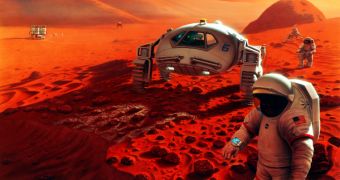The Mast Atmosphere and Volatile EvolutioN (MAVEN) spacecraft is already on its way to the Red Planet, and with it are hopes that its studies will bring the long-term goal of colonizing the Red Planet a bit closer to reality. The orbiter may provide critical insight into how colonization can be achieved.
NASA, for instance, wants to put an astronaut on Mars by the mid-2030s. However, the goal of exploring our neighboring world with humans is much more difficult than simply sending a robotic explorer. This is where missions such as MAVEN come in, experts say.
There are currently five exploration missions on and around the Red Planet, from NASA and the European Space Agency (ESA). The new orbiter, launched on November 18, will arrive at Mars in September 2014, just one week after the Mars Orbiter Mission, launched by ISRO.
These missions will play a critical role in informing space agencies back on Earth about the challenges associated with exploring Mars, and with landing a group of astronauts on its surface. Rovers such as Spirit and Opportunity have already made their fair share of discoveries about the planet's surface.
Now it will be up to MAVEN to complete these investigations with its suite of 8 scientific instruments. All of them will be trained on the Martian atmosphere, trying to determine its chemical composition and the way it interacts with charged particles released by the Sun.
This orbiter is the first mission developed specifically for such applications. This means that NASA will be able to use its measurements to predict how a large, manned spacecraft would interact with the Martian atmosphere during a controlled descent, Space reports.
Such studies are critical to the success of future missions, officials with the American space agency said after MAVEN launched from the Cape Canaveral Air Force Station (CCAFS), in Florida.
“The MAVEN mission will provide some interesting information for scientists. It's also good information for us on the human spaceflight front to understand how the atmosphere of Mars is put together,” said the associate administrator of the NASA Human Exploration and Operations Directorate, William Gerstenmaier.
This “will be important as we look at entry, descent and landing into the Martian atmosphere with larger spacecraft than we've done before, the kind of spacecraft that were made for human missions,” the top NASA official added.

 14 DAY TRIAL //
14 DAY TRIAL //